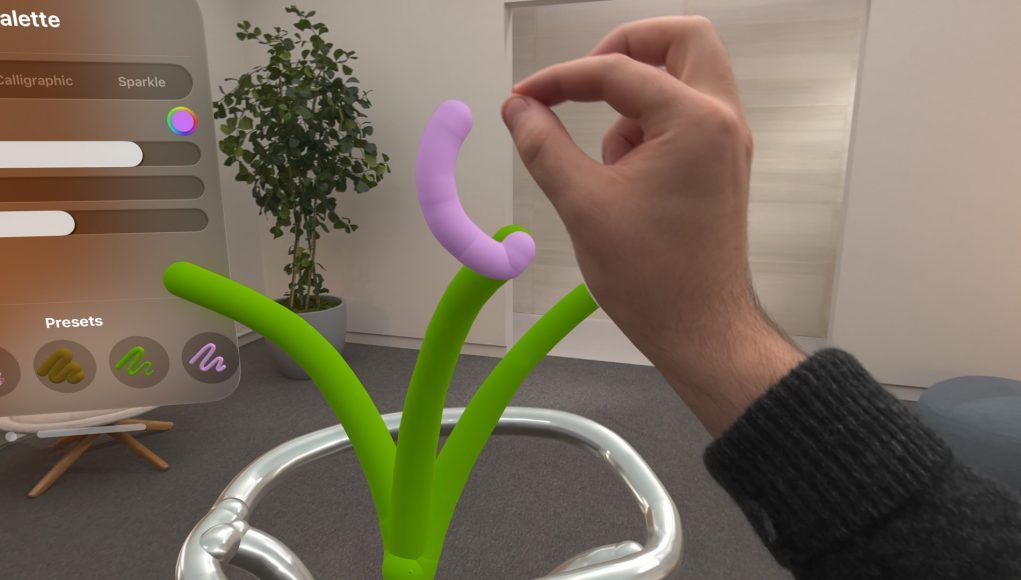For basic Vision Pro interactions like navigating apps and scrolling web pages, the headset’s look-and-pinch input system works like magic. But if you want to go more ‘hands-on’ with virtual content, the headset’s full hand-tracking leaves much to be desired.
Compared to Quest 3, Vision Pro’s full hand-tracking has notably more latency. That means when moving your hands it takes longer for the headset to register the movement. Especially in interactive content where you directly grab virtual objects, this can make the objects feel like they lag behind your hand.
Changes coming in VisionOS 2 stand to improve hand-tracking. Apple detailed the changes in a developer session at WWDC 2024 this week.
For one, the headset will now report estimated hand positions at 90Hz instead of the previous 30Hz. That means the system can reflect changes in hand position in one-third of the time, also making the movement of the hand smoother thanks to more frequent updates. This only applies to a small portion of the overall latency pipeline (which we previously estimated at a total of 127.7ms) but it could reduce hand-tracking latency by as much as 22ms in the best case scenario.
Here’s a look at that in action:
It’s an improvement, but you can still easily see the latency of the teapod compared to the hand, even with this slow movement.
For a snappier experience, VisionOS 2 will alternatively allow developers to enable hand-tracking prediction, which provides an estimate of the user’s future hand position. While this doesn’t truly reduce latency, it can reduce perceived latency in many cases. Similar prediction techniques are common across various XR tracking systems; it’s quite surprising that Vision Pro wasn’t already employing it—or at least not making it available to developers.
Here’s a look at predictions in action:
Now we can see the virtual teapot staying much more aligned to the user’s hand. Granted, this isn’t likely to look quite as good with faster motions.
We’ll be looking forward to putting Vision Pro’s hand-tracking latency to the test with VisionOS 2 soon!







